Atlantic Canada wows adventurous visitors with astounding natural scenery and fascinating cultural destinations. In my view, there are several reasons why Atlantic Canada is special. Apart from having a huge list of bucket list of things to do in Atlantic Canada, the feel of the Atlantic region is compellingly unforgettable
The provinces in Atlantic Canada are:
- Newfoundland and Labrador
- New Brunswick
- Nova Scotia
- Prince Edward Island
A visit to Canada’s Atlantic provinces provides a warm home welcome with lilting accents and ready smiles. In Atlantic Canada, you’ll be welcomed like family. So come, be a part of it, and I’ll bet that just like me you’ll long to return. Here are some interesting facts and amazing places in Atlantic Canada.
Atlantic Canada
Nova Scotia
With a glorious coastline, that to the east is protected by a series of barrier islands and with the rich fruit-growing area of the Annapolis Valley well-matched by cultural and historical attractions and traditions, Nova Scotia (or New Scotland) is a must-see.
Halifax
Its capital, Halifax, is a welcoming city that’s increasingly renowned for its artsy scene.
Take a peek in the Art Gallery of Nova Scotia to see the Maud Lewis exhibition.
She was an artist who painted in the naive tradition, creating colourful images of oxen and horses pulling wagons through to her famous golden-eyed black cats.
One of Canada’s most famous historic forts is the Halifax Citadel, which is a National Historic Site of Canada.
You can learn about Atlantic Canada history and kids can be a Soldier for a Day.
It may not be obvious but Nova Scotians know how to have fun and Halifax is one of the best cities in Canada to party.
Peggy’s Cove
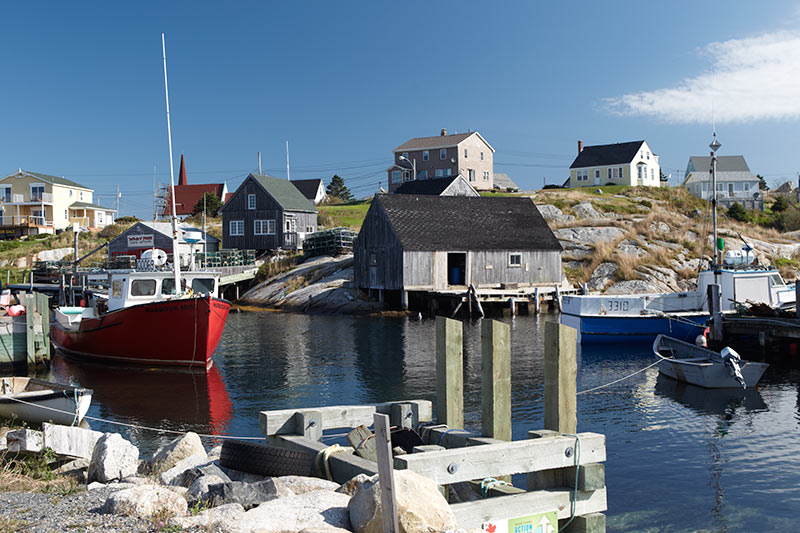
Just west of Halifax is where you’ll find astonishing Peggy’s Cove.
What I thought would simply be a “tourist trap” proved to be a place of great natural beauty boasting not only perhaps the most-photographed lighthouse in Canada, but also a traditional fishing village.
Here buy yourself an example of an authentic Atlantic Canada craft, a whirlygig.
These fanciful wooden carvings of creatures or of fishermen paddling boats, spin and whirl on the wind and make lovely garden ornaments.
Lunenburg
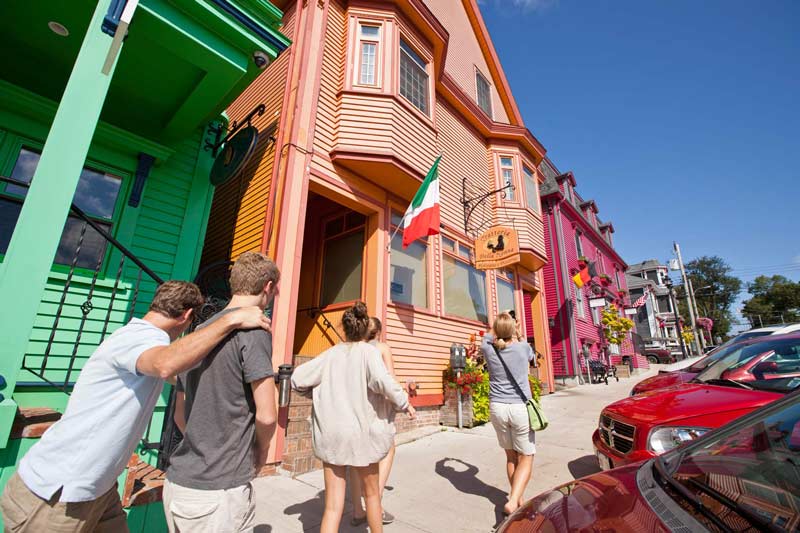
Established in 1753, Lunenburg was designated a UNESCO World Heritage Site because it is the best surviving example of a planned British colonial village in North America.
Soon after its settlement, it became a shipbuilding centre for the Maritimes.
Nowadays, 70 per cent of the original 17th and 18th-century buildings are still extant, meaning the streets of the old village exhibit a genuine historical ambience.
Today, old-town Lunenburg is one of the most colourful villages I’ve had the pleasure to wander.
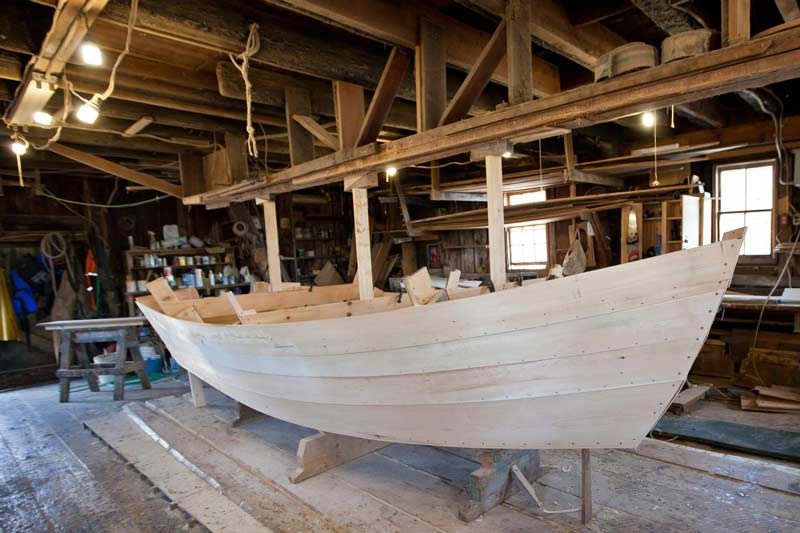
Scarlet-hued, white-trimmed wooden buildings line the harbour, making a fitting historical backdrop to tall ships such as a replica of Canada’s famed schooner, the Bluenose.
Built as a fishing and racing schooner in 1921, the original ship was never beaten when it raced on the international circuit.
Today Bluenose II joins other ships jostling merrily at their moorings in the harbour.
The Fisheries Museum of the Atlantic furthers this heritage feeling.
Here we learn about the history of fishing and seafaring on the Atlantic, particularly while touring several vessels moored on the wharf, or by watching films in the museum’s theatre.
Wild Barrier Islands
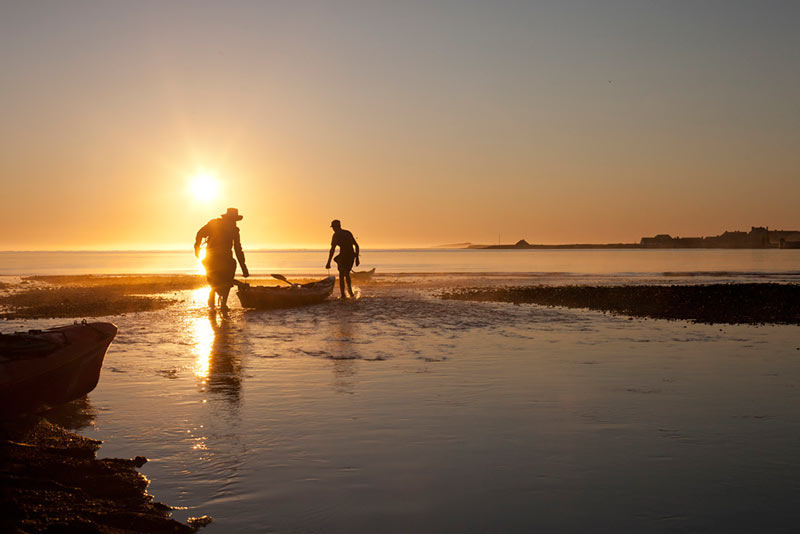
Nova Scotia’s Eastern Shore is home to a rainforest and an archipelago of 100 wild barrier islands which are now a part of a substantive, pristine Nature Trust legacy project.
Barrier islands are offshore islands that shelter a mainland’s otherwise exposed shore.
I first heard about these islands during a trip with Coastal Adventures, while kayaking one gloriously sunny afternoon.
Owner-operator Dr Scott Cunningham led our group of 8 kayakers through this largely untouched habitat, showing us fascinating Mi’kmaq (First Nation) middens.
Essentially, these are “garbage dumps” left by early peoples, which represent a fascinating treasure trove to today’s archaeologists.
As we paddled the protected inner channel we saw osprey, bald eagles, seals and other wildlife.
Although I’ve not yet returned to experience any of them, Cunningham leads one-to-many-day kayak-camping expeditions.
World-class?
Yes, because this pristine environment is a lesser-known, fascinating maritime environment that’s an exciting destination for paddling enthusiasts.
Hooked Rug Museum of North America
A surprising addition to my list?
Not really, if you’re a culture vulture like me.
The so-called “comfortable arts” of sewing, making hooked rugs and other such traditional artisanal crafts are not as recognized as other art forms.
Enter the indomitable Suzanne Conrod, a hooked rug aficionado and passionate collector who decided to start collecting these rare handmade rugs.
She and her late husband worked hard to found and open this museum and in 2013 their dream came true.
Entering this space is to step inside a world of extraordinary if utilitarian beauty.
Hooked rugs were indeed a much-required and often, little-admired household item. Instead of being prized, they were considered necessary items to keep settler’s earthen floors cleaner – and warmer throughout Canada’s long, harsh winter months.
The reason, Conrod says, that heritage rugs are so uncommon is that they wore out.
Or, she noted, “Thrown out when new-fangled linoleum arrived on the scene.”
Visit and be amazed by Conrod’s stunning collection of old and contemporary works.
For more about Canada read:
Prince Edward Island
Prince Edward Island in Canada or “PEI” is called “The Gentle Island” for good reason.
Its sandy beaches, pastoral landscapes featuring red earth embraced by emerald-green fields and woods lend it a peaceful, laid-back ambience that’s a dramatic contrast to other parts of the rugged Atlantic coast like Newfoundland.
No wonder this landscape provided inspiration for author Lucy Maud Montgomery’s classic, international bestselling children’s book, Anne of Green Gables.
The red-headed imp of a girl was my and countless others’ heroine while growing up, and so it’s no surprise that my world-class destinations here include the Confederation Centre of the Arts, as well as Prince Edward Island National Park of Canada, which both have Anne connections.
Historically speaking, the smallest province in Canada was the birthplace of Canada.
The Charlottetown Conference was held in the capital city, Charlottetown, on September 1 to 8, 1864.
Elected officials met to discuss the possibility of a Maritime Union but they didn’t stop there.
When Upper and Lower Canada (now Ontario and Quebec) members asked to join in, together they dreamed a grand notion: a confederation of the provinces which would become Canada.
Three years later, the vision of Confederation was realized, and Canada was born.
Let’s take a glimpse into this gentle isle.
Charlottetown
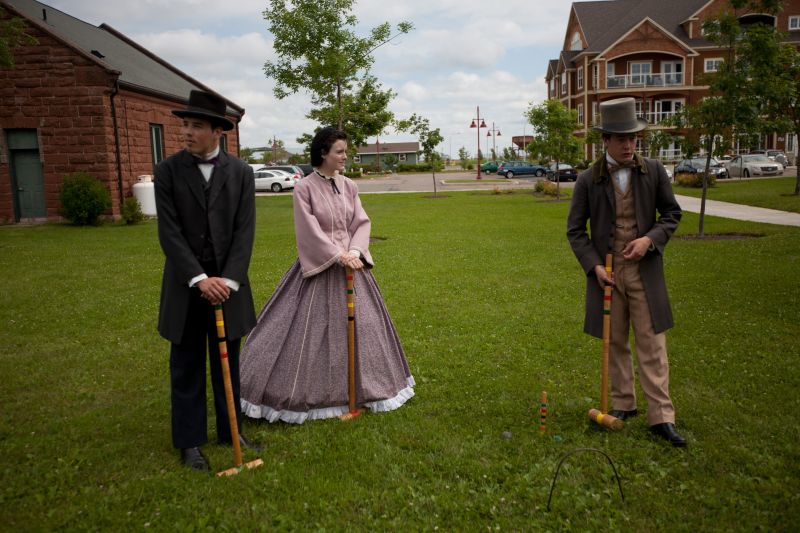
Imagine a colourful array of buskers, actors and musicians thronging an outdoor amphitheatre in the heart of historic Charlottetown.
Now imagine a cultural centre whose raison d’être is to celebrate Canada’s birthplace and you have the Confederation Centre of the Arts.
Here find a theatre, art gallery, and an ongoing art education program through hands-on classes for children and adults.
The building itself has been recognized for being a superior example of brutalist architecture, which contrasts intriguingly to Charlottetown’s heritage buildings.
In 2015, Architecture Canada and Heritage Canada National Trust awarded the Centre the Prix du XXe Siècle Award.
This prize recognized the fact that the Centre takes in a full block in the heart of the city, meaning that it’s both accessible and representative of being a symbol of the significance of PEI’s artistic community.
And what a symbol it is.
For instance, Anne of Green Gables – The Musical™ has been running for 51 consecutive seasons, winning it Guinness World Record designation.
In fact, more than 70 original musicals have been developed at this Centre since its opening in 1964.
So come.
Celebrate the arts.
Take in a musical or play at one of the Centre’s three theatres, and view the latest exhibits in the art gallery.
Prince Edward Island National Park
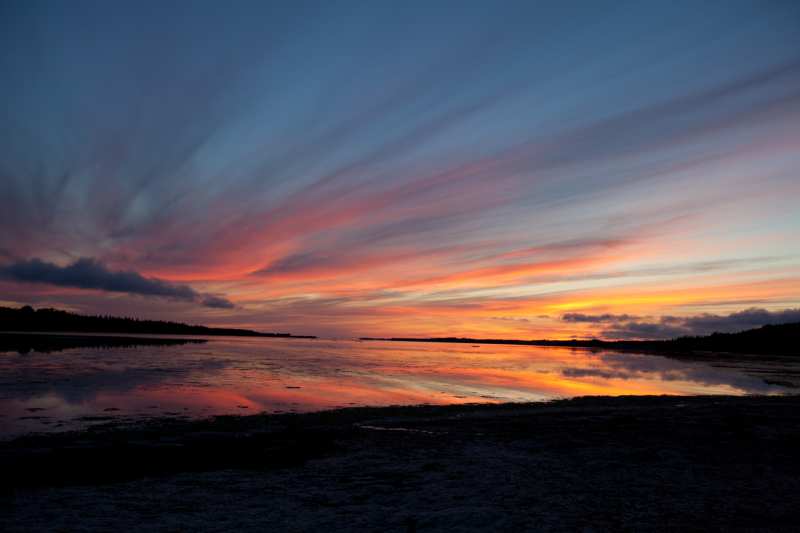
Because it’s one of the most-visited Canadian national parks, this stunning environment of dunes, beachfront, lagoons and woodlands require constant ecological monitoring to ensure its delicate biodiversity remains protected from enthusiastic visitors.
Along the shore, sage-coloured marram grasses growing on dunes bend and nod, waving in the face of gusty offshore breezes.
“White horse” waves roll in, making their unforgettable background soundscape as holidaymakers stroll seemingly endless beaches.
Children build sandcastles adorned with seashells and happily bury their parents up to their necks in the sand – that enchanting, hilarity-filled pastime of youth.
Meanwhile, the park is noted also for its endangered species.
Birdwatchers flock here to see an increasingly rare shorebird, the piping plover.
They construct their nests on the beaches and in spring you may discover Parks Canada naturalists have cordoned off the nesting areas.
Bring binoculars and you’ll possibly be delighted by the glimpse of a tiny fluff ball on skinny legs (a plover chick) dashing about on the sand.
Use field glasses, too, while walking on boardwalks through wetlands to get a closer look at stately great blue herons as they stand patiently waiting, hunting fish.

Balancing the natural elements of this park is the creative wonder of Green Gables, the Cavendish area’s farmhouse home of Lucy Maud Montgomery’s heroine, Anne of Green Gables.
Although not the author’s real home, the house was owned by her father’s cousin.
Montgomery visited it often and wrote, “Cavendish is to a large extent Avonlea. Green Gables was drawn from David Macneill’s house, though not so much the house itself as the situation and scenery, and the truth of my description of it is attested by the fact that everyone has recognized it.”
Parks Canada protects it as an important cultural symbol of PEI.
Newfoundland and Labrador
At first glance, the rugged coastline of Newfoundland rising from the ocean and the ancient Precambrian rock of Labrador’s Canadian Shield form an austere-looking, forbidding landscape.
Locals will tell you life’s not easy here – but they live it with fierce pride and love matched by boundless irony and humour.
The sea provided a living for many, and now, with climate change, fishing quotas and more, residents are adapting, with many “working away” – meaning, elsewhere in Canada or abroad.
However, this place gets in the blood and even for Canadians who’ve never set foot on it, the province holds a very special place in our definition of what it is to be Canadian.
Why?
To me, it’s because Newfoundland and Labrador symbolise perseverance in the face of daunting odds.
The sea pounds the coastline; rocks and bogs define the landscape.
Nonetheless, waves of immigrants came here from the earliest, ancient cultures of some 9,000 years ago, to the Vikings in 1000AD, Italian John Cabot in 1497, and then in the 15th and 16th centuries, fishermen from Portugal, France, England and Spain.
Despite the presence of whaling stations and migratory fisher peoples, the actual official settlement didn’t commence until the French founded Placentia in 1662.
And last but by no means least, Newfoundland and Labrador is Canada’s youngest province, having joined in 1949 – late when you consider Confederation of the first four provinces was in 1867.
So what’s here that’s world-class?
Here’s a teaser bucket list of three amazing sights.
L’Anse-aux-Meadows National Historic Site
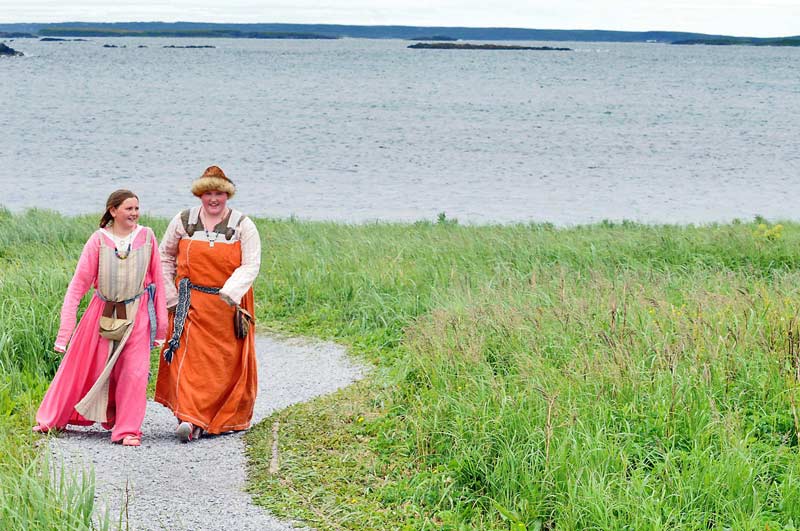
Declared a UNESCO World Heritage site in 1978 because it’s the first known place in the Americas to be settled by Europeans, L’Anse-aux-Meadows is also a Canadian National Historic Site operated by Parks Canada.
Five centuries predating Christopher Columbus, Leif Eriksson and his crew of seafaring Vikings arrived here in the year 1000.
Although they didn’t found a permanent settlement here on Newfoundland’s finger-like Northern Peninsula, they erected dwellings, a forge, and some workshops from found materials such as peat and wood.
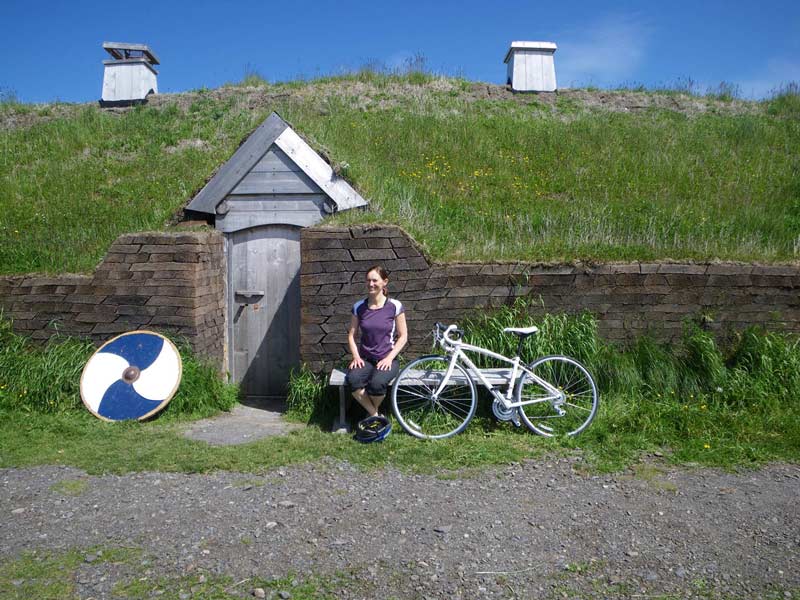
These structures have been recreated, so visitors can get a sense of what life may have been like here in the New World.
A visitors’ centre helps us understand how the Vikings lived here, plus guided tours include a visit to the forge and storytelling.
In fact, Leif Eriksson’s voyage and settlement here is recounted in the Viking Sagas, collections of stories written in the 13th century.
Getting to L’Anse-aux-Meadows keeps us in the Viking theme because Newfoundland created a touring route called the Viking Trail.
It takes from two to 10 days to explore its length and naturally, the longer you take, the more you’ll appreciate.
Gros Morne National Park
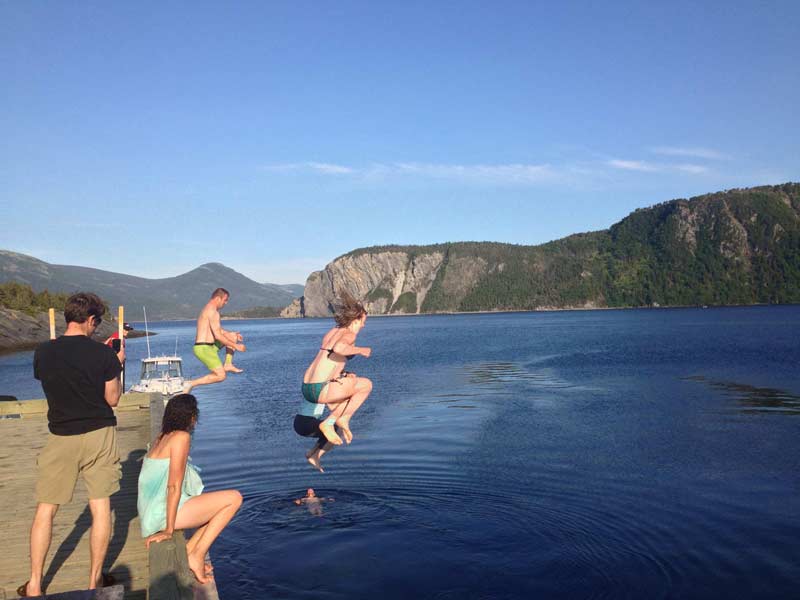
From the first European settlement to the colliding tectonic plates, here at Gros Morne, the park delivers astoundingly windswept hiking and wildlife watching amid a primeval-looking landscape where Earth’s mantle of rock is exposed.
Operated by Parks Canada, Gros Morne is a gem because earth sciences are explained by on-site naturalists as well as interpretive panels at an excellent visitors’ centre.
Do the 16-kilometre circuit hike of Gros Morne Mountain to gain panoramic views of ocean coastline, rocks and skyscape.
It’s breathtaking.
It rains often so be prepared and don’t be discouraged.
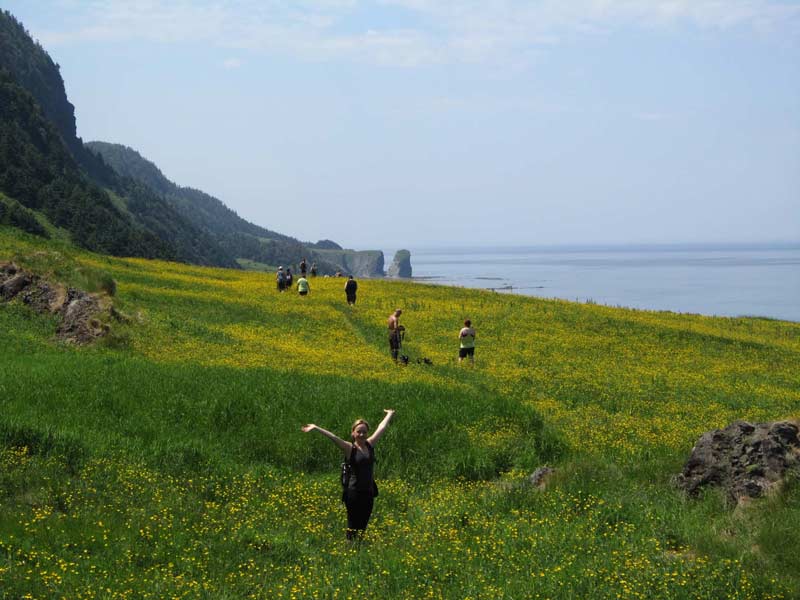
Of course, we all want at least some blue-sky days when exploring, but here in this primordial landscape, swirling mists spin their own magic.
After exploring 500 million years of geological history along Gros Morne’s ancient Tablelands, take a two-hour boat ride through Western Brook Pond.
The fjord’s billion-year-old, sheer cliffs rise from the lake which is fed by spectacular waterfalls from the plateau above.
Frankly?
This is a photographer’s dream.
To get to the boat dock, first, we hike along a boardwalk wending its way through a peat bog.
Here watch for deer, moose, and other wildlife such as ospreys (fish hawks).
What I’ve not yet done is take a hike ascending to the rim of Western Brook Pond, where it’s also then possible to camp overnight.
For more information on this activity plus the boat excursion of the landlocked fjord, visit BonTours.
Woody Point and Norris Point
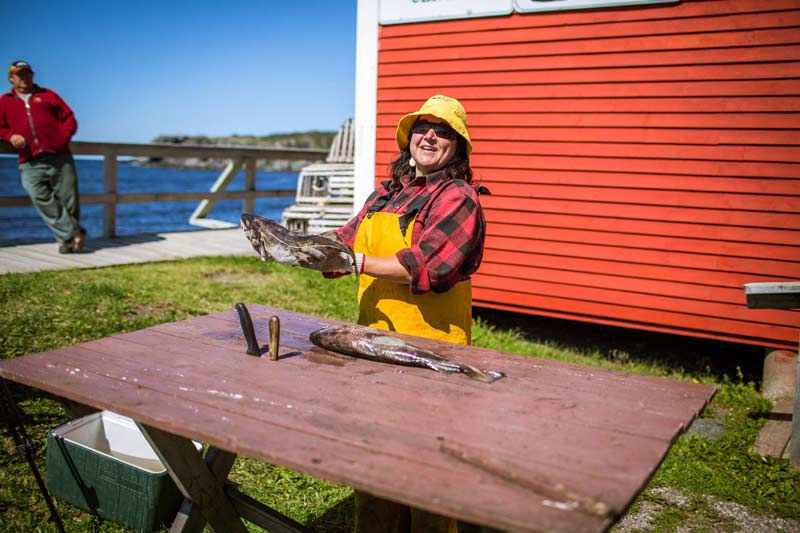
Also in Gros Morne are the seaside towns of Woody Point and Norris Point, overlooking Bonne Bay.
I’ve included them here because to me, these villages are “quintessential” Newfoundland and worth a visit.
Come in August to take in Woody Point’s famous festival, Writers at Woody Point.
Shelagh Rogers hosts the festival and she’s a Canadian treasure of her own.
Rogers is the Canadian Broadcasting Corporation’s (CBC’s) host of a popular radio program called “Between the Covers” where she interviews authors about their books and lives.
During this annual writers’ festival, authors read, musicians play, and Rogers reveals the artists’ souls during her series of public interviews.
It’s an especially intimate feeling you get here because visitors mix and mingle with authors.
Such personal interactions between readers and writers are rare – yet it seems ever so natural here in Atlantic Canada.
Of course, Woody Point is more than an August festival. It’s a picturesque seaside village where you can hire kayaks to get an up-close-and-personal view of the coastline.
As a visual artist who appreciates folk arts such as rug hooking, I enjoyed visiting Molly Made Fibre Art Studio.
I long to return to take one of the five-day workshops offered here, where the proprietors’ goal is to keep this traditional craft alive and well.
Neighbouring Norris Point is home to the Bonne Bay Marine Station, a perfect destination to learn about Atlantic Ocean life and lore.
Here find live specimens of endangered species such as wolffish, and a rare (and beautiful) blue lobster.
Discover how fjords were formed – and which flora and fauna denizens call them home.
Naturally, Newfoundland is far more than just these three destinations on the western shore.
There’s a host of amazing treasures to discover.
- Yamnuska Wolfdog Sanctuary
- Polar Bears of Churchill
- Whale watching Victoria
- Polar Bears in Winnipeg Zoo
- Canadian Wildlife Experiences
- Big Five Safari in Manitoba
- Cool Cat Cafes in Canada
New Brunswick

With a history of European settlement dating from the early 1600s, New Brunswick’s human heritage is a sister story to its Atlantic Canadian cousins (Prince Edward Island, Nova Scotia and Newfoundland and Labrador).
French, English, Scots, Irish settled here.
After the American Revolution, a steady stream of Loyalists (people in America who were loyal to the British Crown) arrived.
These included German, Dutch and Black settlers.
Some Black immigrants were free; some were slaves who arrived here with their Loyalist families.
Not only is the human history fascinating here in New Brunswick, so is this province’s natural history.
Bouctouche
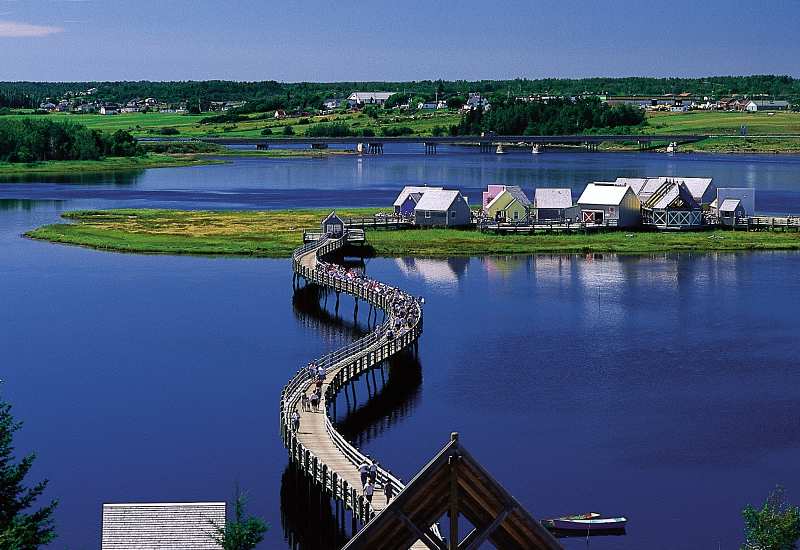
Bay of Fundy National Park
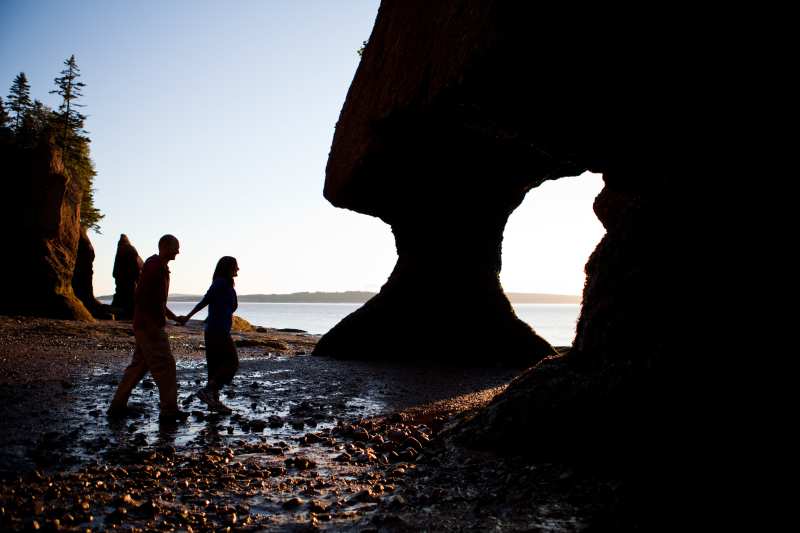
With tides of 12 metres or more, the Bay of Fundy has the highest tides in the world and one reason why Parks Canada operates this park as one of Canada’s natural wonders.
The Atlantic Ocean floods into the narrow, long and “paper-clip-shaped” Bay of Fundy every 23 hours and 25 minutes.
It’s the combination of the length and shape of the bay plus the “bathtub-like” rocking motion of the incoming and outgoing waters which creates conditions for the tide’s phenomenal height.
What’s totally thrilling is to be able to hike on the floor of the ocean during low tides at Hopewell Rocks, then kayak in the same spot, during high tide.
These red sandstone rocks have been eroded by the sea and winds into flowerpot shapes, making fun if not sometimes challenging subjects for photographers.
Remember, always, to be aware of the tides: being caught in rushing water here is no joke.
Parks Canada offers many stellar interpretive programs here, so check their website for family-friendly activities where you can learn about edible plants, go on a photo safari, do yoga oceanside or even attend a traditional-style kitchen party.
Don’t know what that is?
A kitchen party is an authentic Atlantic Canada tradition, where families and friends bring instruments and their voices, and sing and play the afternoon away…often into the early evening.
Stonehammer Geopark
A Geopark is a UNESCO world heritage park of special global significance due to its geological history.
Stonehammer is North America’s first Global Geopark, being a collection of sites where we can explore a billion years of Earth’s history.
From the collision of continents, earthquakes, climate changes such as ice ages and more, New Brunswick just happens to be a place on our planet where the exposed geology can tell Earth’s geological history very well indeed.
How to discover and understand Earth’s evolution?
Start at St. John’s New Brunswick Museum where interactive models in the permanent exhibit, “Our Changing Earth” demonstrate how continents collided and have shaped our current world landscape over 4.5 billion years.
After learning about Stonehammer’s significance, it’s time to jump in and experience some Geopark activities.
Among these, consider kayaking with Go Fundy Events guides who paddle rivers whose watery routes were carved by glaciers 15,000 years ago.
Bike, hike or drive the Fundy Trail Parkway to win aerial views of the Bay of Fundy’s extraordinary tides.
Kouchibouguac National Park Dark Sky Preserve
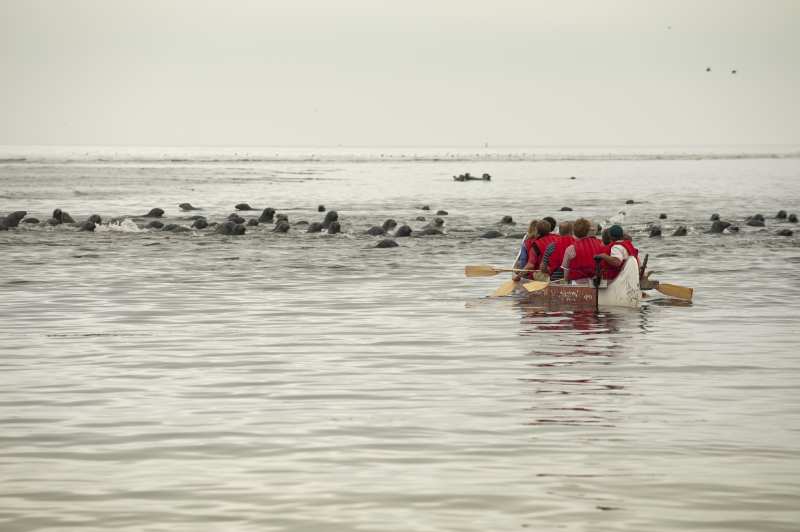
The Royal Astronomical Society of Canada is on a mission!
The organization is part of an international movement of astronomers who have recognized that light pollution is obliterating views of the canopy of stars, planets and galaxies.
Accordingly, Dark Sky Preserves (DSPs) are being designated across Canada and the world, in order to identify and conserve areas where the dark sky can still be seen.
Enter Kouchibouguac, which was designated as a DSP in 2009.
Because it is an area where no sky glow (artificial light) exists, this Canadian national park has been designated as one of Canada’s 17 RASC recognized Dark-Sky Preserves.
Parks Canada offers programs on astronomy and dark-sky themes and is actively working to reduce park lighting.
- 25 Things To Do In Banff
- 25 Things To Do In Toronto
- 50 Things To Do In Vancouver
- 20 Things To Do In Whistler in Winter
- 7 Things To Do In Gananoque
- 30 Things To Do In Niagara Falls
- 20 Things To Do In Niagara On The Lake
- 30 Things To Do In Ottawa
- 25 Things To Do In Calgary
- 25 Things To Do In Winnipeg
- 20 Things To Do In Montreal
- Canada in Winter
- Canada in Summer
- Canada in Spring
- Canada in Fall
- 35 Things To Do In British Columbia
- 8 Things To Do In Penticton
- 10 Things To Do In Kelowna
- 11 Things To Do On Vancouver Island
- 22 Things To Do In Quebec In Winter
- 25 Things To Do In Yukon
- 20 Things To Do In Whitehorse
- 17 Things To Do In Yellowknife
- 20 Things To Do In Nova Scotia
- 5 Things To Do In Peggy’s Cove
- 11 Things To Do In Fredericton
- 20 Things To Do In Ottawa At Night
- Banff in Winter
Plan Your Trip

Rent A Car – Find the best car rental rates at Discover Cars. They compare car hire companies to provide you with the best deal right now.

Find A Hotel – If you’re curious about this article and are looking for somewhere to stay, take a look at these amazing hotels.





